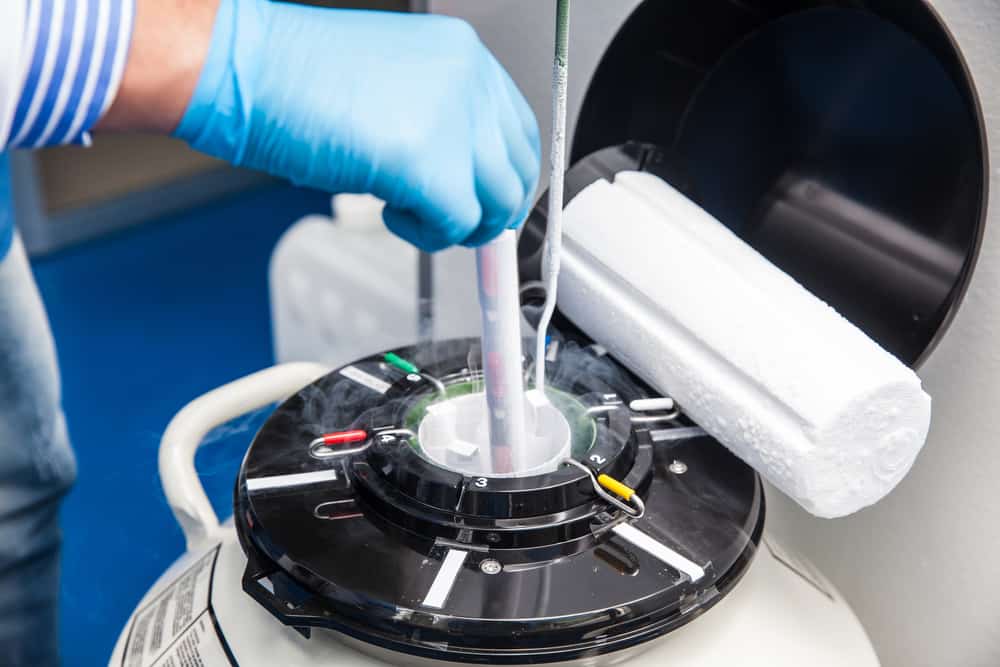
Extremely low temperatures between -150°C to -273°C set specific requirements for the materials used in cryogenic welding. Manufacturers need to be aware of the cryogenic properties of metals to determine their suitability to withstand low temperatures. Several metals that are ductile at room temperatures become brittle at cryogenic temperatures, which can cause weld cracking. Stainless steel and titanium, both resistant to corrosion, display a high level of ductility at such temperatures. Further, titanium is known to be much more resistant to deformation at extremely low temperatures. This is why austenitic steel and titanium are used commonly in vacuum-sealed tanks, pressure vessels, and refrigeration units to store and ship liquified gases.
Below, we discuss the usage of cryogenic tank welding in various sectors, including energy and medicine, and how GTAW orbital welding proves to be the most effective process for cryogenic tank welding.
Storage Challenges for Cryogenic Tank Welding Across Industries
Many industries—including oil and gas, chemicals, aeronautics, space, manufacturing, food, energy, and medicine—utilize liquified hydrogen, oxygen, nitrogen, argon, and helium for various applications. Storing these gases at cryogenic temperatures requires tanks and vessels to withstand the pressure needed to keep the gases in the liquid form without becoming brittle at low temperatures while resisting any corrosive elements.
Storing Liquid Hydrogen
Liquid hydrogen poses unique challenges for tanks and pressure vessels used for its storage and shipping. Hydrogen displays a corrosive effect on metals through high-temperature hydrogen attack. This characteristic, in particular, affects the containers that pressurize hydrogen to liquid temperatures. Further, hydrogen bonds with elements such as sulfur or carbon in a mix of steel to cause hydrogen embrittlement in metals.
Stainless steel is less prone to hydrogen embrittlement due to the presence of chromium and fewer sulfides. Titanium only bonds with hydrogen at very high temperatures that prove advantageous for the long-term storage of liquid hydrogen.
The challenges of storing liquid hydrogen apply to storing liquid hydrocarbons like methane, propane, and LNG. As a result, cryogenic tanks for storing hydrocarbons in the oil and gas and energy sectors require a robust outer jacket with vacuum insulation to ensure improved thermal performance with extended hold times.
Storing Liquid Oxygen
Liquid oxygen is used across many industries. In the space sector, liquid oxygen is mixed with hydrogen and kerosene to make high-energy rocket fuel. Liquid Medical Oxygen (LMO) is high-purity oxygen used in various medical applications, from first-aid to respiratory treatment. Oxygen used in fermenters and bioreactors encourages cell growth that the pharmaceutical industry uses to manufacture drugs. Liquid oxygen is a volatile substance and can cause sudden inflammation of materials such as stainless steel. Increased nickel content in stainless steel can improve combustion resistance during cryogenic tank welding for containers storing liquid oxygen.
Storing Liquid Nitrogen and Liquid Helium
Liquid nitrogen is widely used for cryopreservation of biological samples and for freezing raw and partially prepared products in the food industry. It is also used as a coolant for superconductors, vacuum pumps, and other equipment. The tanks and vessels storing liquid nitrogen need to be specially insulated with vents to prevent pressure buildup while avoiding leakage into the air. Liquid helium finds its usage as a cryogenic refrigerant for superconducting magnets such as those used in Magnetic Resonance Imaging (MRI). Helium is also used to pressurize fuel tanks, especially those for liquid hydrogen.
Industry-specific requirements for safety, hygiene, and ease-of-use for cryogenic tanks demand clean and smooth welds that are best achieved through Gas Tungsten Arc Welding (GTAW). For pressure vessels and cryogenic tanks, the GTAW process significantly improves the mechanical and metallurgical properties of weld joints when compared with other welding methods.
However, the relative slowness of the GTAW process is a challenge in high-specification projects involving cryogenic tanks. The root and fill passes are performed at a slow travel speed due to the limited penetration capability of the low-energy density arc. This results in many weld passes and increases the welding times. Automation through orbital welding can effectively address these challenges.
Why GTAW Orbital Welding Is the Best Choice for Cryogenic Tank Welding
Cryogenic tank welding demands minimum rework with no damage to materials. The following advantages of the GTAW orbital welding process address the challenges of temperature change and its effects on the metallurgical properties of materials:
- Purity of welds- GTAW prevents weld contamination from atmospheric hydrogen, oxygen, or nitrogen to yield pure and clean welds in cryogenic tanks.
- Weld consistency- Automation enables the weld head to travel in a consistent and steady manner, fulfilling programmed parameter specifications that ensure repeatable and high-quality welds with exact schedule specifications.
- Increased productivity- With automated GTAW, welders can improve their productivity by creating welds without stopping or restarting.
These benefits of the GTAW orbital welding process meet the safety and hygiene requirements of low-tolerance environments across industries, making GTAW orbital welding the preferred method for cryogenic tank welding.
Arc Machines, Inc. is your one-stop solution for cryogenic tank welding. For inquiries regarding our products, contact sales@arcmachines.com. For service inquiries, contact service@arcmachines.com. Contact us to learn more about our automated GTAW welding solutions.




